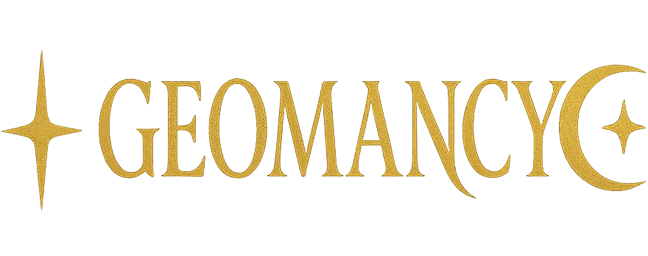The Post-Heaven Bagua: A Mathematical Model of the Milky Way's Time-Space Integration
Origin and Development of the Post-Heaven Bagua
The Post-Heaven Bagua (also known as the Wen Wang Bagua) is a system that was developed by the sage King Wen of the Zhou Dynasty (around the late 12th century BCE), who is regarded as one of the most influential figures in the development of Chinese civilization. It was created by rearranging the Pre-Heaven Bagua and integrating the mathematical principles of the Luo Shu. While the Pre-Heaven Bagua and the He Tu were static models, the Post-Heaven Bagua introduced a dynamic perspective that acknowledged the constant change and motion in the universe.
As the ancient Chinese people studied the world through the guidance of the He Tu and Pre-Heaven Bagua, they realized that the world was in a constant state of motion, and things changed over time. The He Tu and Pre-Heaven Bagua provided static representations, so they sought to introduce the dynamic principles of the Luo Shu to better understand these changes. The Post-Heaven Bagua is therefore more focused on the practical applications of cosmic principles like the operation of Heaven and Earth, seasonal transformations, and the interaction of Yin and Yang, applying them to real-world spaces.

Key Features of the Post-Heaven Bagua
1. The Arrangement of the Post-Heaven Bagua
The trigrams in the Post-Heaven Bagua are arranged based on the mathematical principles of the Luo Shu and the natural laws of the universe. It mainly focuses on concepts like the interaction of the Five Elements (birth and destruction cycles), the changes of the Four Seasons, and the auspicious and inauspicious directions. These principles combine to form the ancient Chinese philosophical views of Number, Image, and Principle (“Shu, Xiang, Li”). The Post-Heaven Bagua can be considered a culmination of the He Tu, Luo Shu, and Pre-Heaven Bagua, and it is often described as the system “used” to guide practical action in daily life.
2. Applications of the Post-Heaven Bagua in Feng Shui and Destiny Analysis
- Residential Feng Shui: Different directions influence various aspects of life. For example, placing symbols of authority (like a dragon turtle) in the Northwest (Qian) position can enhance power and leadership, while placing plants in the Southeast (Xun) position can help boost wealth. These are broad guidelines, and specific adjustments require further analysis.
- Personal Destiny Analysis: By analyzing a person’s Five Elements in their BaZi (Eight Characters), one can select the most auspicious directions to enhance their luck. For instance, if a person lacks the Fire element in their chart, they might place red items or lights in the South (Li) to supplement Fire energy.
The Mysterious Verse of the Post-Heaven Bagua
Qian 6, Dui 7, Li 9, Zhen 3, Xun 4, Kan 1, Gen 8, Kun 2
The Emperor emerges from Zhen (Thunder), aligns with Xun (Wind), meets with Li (Fire), is served by Kun (Earth), speaks through Dui (Lake), battles with Qian (Heaven), labors with Kan (Water), and stops at Gen (Mountain).
This verse, along with the associated trigrams and numbers, is an essential guide for understanding the dynamic flow of energy in the universe and how to harmonize with it in practical applications such as Feng Shui, personal destiny analysis, and other areas of traditional Chinese metaphysics.
後天八卦:銀河時空整合的數學模型
後天八卦的起源與發展
後天八卦(又稱文王八卦)是由周朝聖賢周文王(約公元前12世紀末)發展的系統,他被認為是中國文明發展中最具影響力的人物之一。後天八卦通過重新排列先天八卦並整合洛書的數學原理而創建。先天八卦與河圖是靜態模型,而後天八卦引入了動態視角,承認宇宙中持續的變化與運動。
當古代中國人通過河圖和先天八卦研究世界時,他們認識到世界處於不斷運動的狀態,事物隨時間而變化。河圖和先天八卦提供了靜態表示,因此他們引入洛書的動態原理來更好地理解這些變化。後天八卦因此更專注於宇宙原則的實際應用,如天地運作、季節轉換和陰陽互動,將它們應用於現實世界空間。

後天八卦的關鍵特徵
1. 後天八卦的排列
後天八卦中的卦象是根據洛書的數學原理和宇宙自然法則排列的。它主要關注五行(生剋循環)、四季變化以及吉凶方向等概念。這些原則結合形成了中國古代哲學的數、象、理觀點。後天八卦可以被視為河圖、洛書和先天八卦的集大成者,常被描述為指導日常實踐行動的”應用”系統。
2. 後天八卦在風水與命理分析中的應用
- 住宅風水:不同方向影響生活的各個方面。例如,在西北(乾)位置放置權威象徵(如龍龜)可以增強權力和領導力,而在東南(巽)位置放置植物可以幫助提升財富。這些是廣泛指南,具體調整需要進一步分析。
- 個人命理分析:通過分析一個人八字中的五行,可以選擇最吉祥的方向來增強運氣。例如,如果一個人的命盤中缺乏火元素,他們可以在南方(離)放置紅色物品或燈光來補充火能量。
後天八卦的神秘詩句
乾六、兌七、離九、震三、巽四、坎一、艮八、坤二
帝出乎震,齊乎巽,相見乎離,致役乎坤,說言乎兌,戰乎乾,勞乎坎,成言乎艮。
這首詩句以及相關的卦象和數字是理解宇宙能量動態流動以及如何在風水、個人命理分析和其他中國傳統玄學領域中與之和諧相處的重要指南。

